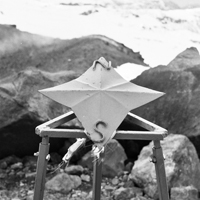On December 7th, PacSun’s Chief Executive Officer Gary Schoenfeld announced some big news. First that the mall-based action-sports-based chain would be closing 175-200 of its stores in the next 14 months, and that a 5-year $100 million revolving credit deal would be happening with Wells Fargo Capital Finance, and a $60 million loan funded by Golden Gate Capital.
“The combination of these transactions greatly enhances our financial and operating position and is another critical step forward as we work to re-establish PacSun as a leading specialty retailer across the U.S.,” Schoenfeld said.
“With the support from all of our major landlords, we can now focus on our targeted base of 550-600 better performing stores and our enhanced merchandising and marketing strategies for becoming the preferred destination among teens and young adults for great style and great brands.”
PacSun also announced its results for the third quarter of fiscal 2011. Net sales for the third quarter of fiscal 2011 ended October 29, 2011, were $242.0 million versus net sales of $257.9 million for the third quarter of fiscal 2010 ended October 30, 2010. Total Company same-store sales decreased 3% during the period.
“After a soft start to the back-to-school season in early August, our business improved in both men’s and women’s resulting in same-store sales and non-GAAP loss per share for Q’3 better than we had expected,” Mr. Schoenfeld said. “Looking now to the fourth quarter, we were encouraged by double-digit positive comps on Black Friday and a particularly strong response to our new strategies for women’s holiday merchandising. Yet seasonal categories in both genders have started off slower than we would have expected resulting in quarter-to-date comp trends similar to the -3% we achieved in Q’3.”
Since PacSun carries many of the top action sports brands ranging from Volcom to Hurley to Billabong, this does not bode well for brands dependent on the success of one of their larger retailers. However most such brands have also continued to move forward diversifying into other types of stores, creating more of their own stores, increased ecommerce solutions, and for many, put extra efforts into expanding outside of the United States, particularly into parts of Europe and Asia.


